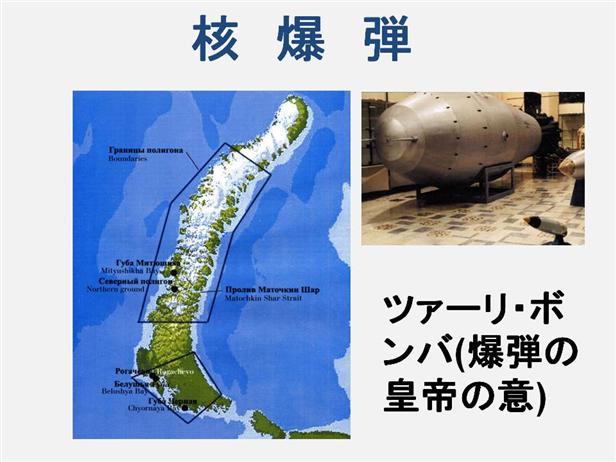| front |1 |2 |3 |4 |5 |6 |7 |8 |9 |10 |11 |12 |13 |14 |15 |16 |17 |18 |19 |20 |21 |22 |23 |24 |25 |26 |27 |28 |29 |30 |31 |32 |33 |34 |35 |36 |37 |38 |39 |40 |41 |42 |43 |44 |45 |46 |47 |48 |49 |50 |51 |52 |53 |54 |review |
 |
The Soviet Union tested its first nuclear weapon ("Joe-1") in 1949, in a crash project developed partially with espionage obtained during and after World War II. The USSR was the second nation to have developed and tested a nuclear weapon. The direct motivation for their weapons development was the development of a balance of power during the Cold War. It tested its first megaton-range hydrogen bomb in 1955 ("RDS-37"). The Soviet Union also tested the most powerful explosive ever detonated by humans, ("Tsar Bomba"), with a theoretical yield of 100 megatons, intentionally reduced to 50 when detonated. After its dissolution in 1991, the Soviets' weapons entered officially into the possession of Russia. The device offically designated RDS-220, known to its designers as Big Ivan, and nicknamed in the west Tsar Bomba (and referred to as the Big Bomb by Sakharov in his Memoirs ) was the largest nuclear weapon ever constructed or detonated. This three stage weapon was actually a 100 megaton bomb design, but the uranium fusion stage tamper of the tertiary (and possibly the secondary) stage(s) was replaced by one(s) made of lead. This reduced the yield by 50% by eliminating the fast fissioning of the uranium tamper by the fusion neutrons, and eliminated 97% of the fallout (1.5 megatons of fission, instead of about 51.5 Mt), yet still proved the full yield design. The result was the "cleanest" weapon ever tested with 97% of the energy coming from fusion reactions. The effect of this bomb at full yield on global fallout would have been tremendous. It would have increased the world's total fission fallout since the invention of the atomic bomb by 25%. |